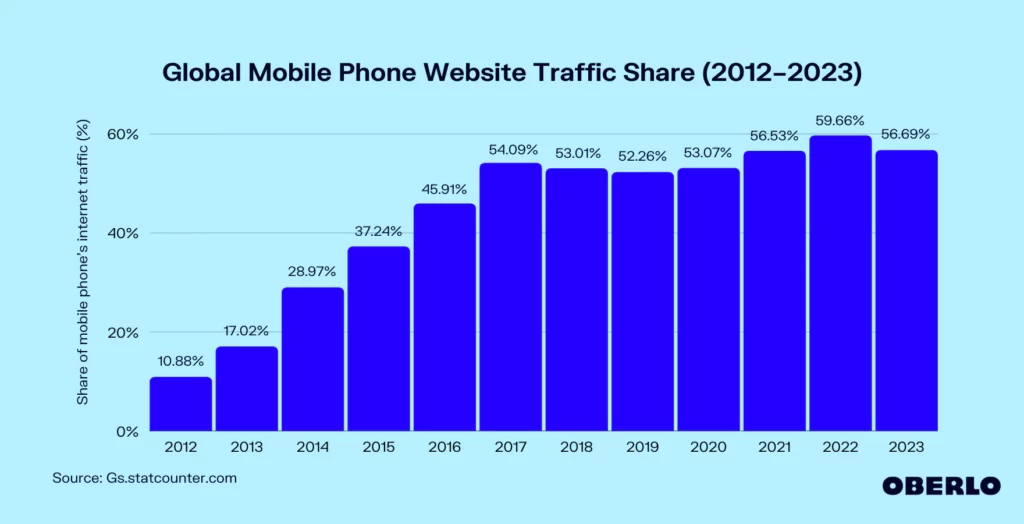SEO planning: how to create a successful SEO plan
- 1 What is an SEO plan?
- 2 Which search engines need to be included in SEO planning?
-
3
What SEO factors are most important?
- 3.1 1. Core Web Vitals
- 3.2 2. Target market, search intent and keywords
- 3.3 3. Navigation and accessibility
- 3.4 4. Content
- 3.5 5. Internal linking and broken links
- 3.6 6. Aesthetic appeal, design, and user experience
- 3.7 7. On-page optimisation, structure, and technical SEO
- 3.8 8. Links back to your site
- 3.9 Our top 8 list is by no means final
- 4 How do I create an SEO plan?
- 5 How do I deliver the plan once created?
- 6 How do I know if my plan has been successful?
- 7 Conclusion: How to deliver better results with good SEO planning
- 8 References and further reading
Benjamin Franklin memorably claimed that: “failing to plan is planning to fail“. This is never more prevalent than in SEO. No website finds success through blind luck. SEO planning is pivotal to driving traffic to your online presence, and in this guide, we’ll discuss how to draw up a successful 6 to 12 month SEO plan for your website.
Editor’s Note [13th November 2023]: Our original guide was created back on 27th October 2020 and while the fundamentals of SEO planning remain the same, the tools and ingredients that make up SEO have changed. In this latest update, we’ve given the original guide a fresh new update to include additional information, new data, and an up-to-date view on what it takes to create a successful SEO plan.
What is an SEO plan?
Before jumping straight into what an SEO plan is, we would encourage readers to check out our comprehensive no-nonsense guide to simple SEO below:
SEO Basics: The Simple SEO Guide for Website Owners [UPDATED]
Ok, so what is an SEO plan? This is a process sometimes also referred to as an SEO strategy or SEO template.
Both refer to a carefully prepared set of activities outlining how you intend to attract visitors to your website through organic search results.1

If you do not carry out adequate SEO planning, your site will struggle to attract visitors
It is no secret that traffic is the lifeblood of any website. After all, what is a website without visitors? The more visitors a site attracts, the more you are likely to achieve your desired goals. SEO planning, with a focus on Google, is more important than ever today.
But, an effective SEO plan isn’t just about getting any traffic, it’s about attracting the right kind of visitors, those who are genuinely interested in what you have to offer. This means aligning your website’s content with what your audience is searching for and targeting the right keywords.
This is particularly significant as search engine algorithms continue to evolve, meaning it’s essential to stay updated and adapt your strategies accordingly.
Which search engines need to be included in SEO planning?
As can be seen below in the chart from Statista, Google has an 83.49% share of the entire search engine market worldwide.2
Although down a few percent from the time our original guide was created, Google is still the world’s most popular search engine by a long shot.

SEO plans need to consider various search engines, but Google is King
Also not to be ignored is Bing, showing the most significant growth, climbing to 9.19% thanks to Microsoft’s partnership with OpenAI and Bing Chat.
Since the original 2020 article, AI has taken the world by storm and Microsoft has been at the forefront with its AI-first search initiatives.
Others shown on the chart include Yahoo! at 2.69%, Baidu at 0.6%, YANDEX at 0.59%, and DuckDuckGo at 0.83%,
![Worldwide market share of search engines - seo planning template & strategy [updated] Statistic: market share of leading desktop search engines worldwide from january 2015 to july 2023 | statista](https://www.statista.com/graphic/1/216573/worldwide-market-share-of-search-engines.jpg)
Find more statistics at Statista
What SEO factors are most important?
If you are going to draw up a successful SEO plan, you first need to identify your goals and understand what matters most to your business and SEO.
We’ve covered SEO goals and KPIs in our guide here:
From UA to GA4, Top Google Analytics Tips to Measure SEO Results [UPDATED]
It’s important to view SEO as a part of your overall business and marketing strategy, so any SEO goals should be traceable back to what you are trying to achieve as a business.
Once you have identified your business goals, cross-check what matters most to your website as part of your SEO plan.
To build a successful SEO plan, follow these steps:
1. Core Web Vitals
When originally producing this guide we listed “Web Vitals”3 as the number one factor, mentioning that Google had claimed that these core vitals were not deal-breakers. In the short space of time since web.dev announced Core Web Vitals as a subset of Web Vitals, with a focus on real-world user experience.
Search Engine Journal discussed Core Web Vitals as a ranking factor4 and then the Page Experience update was rolled out on June 15th 20205, making it very clear that having good Core Web Vitals is important.

Core Web Vitals in SEO plans – the importance of speed and user experience
A large part of what Core Web Vitals aims to address is the real-world experience your visitors have on both desktop and mobile devices. Just consider for a moment that you may be using your website on a super-fast fibre broadband connection, using an Apple Mac with a large screen resolution. Actually, the large majority of visitors these days are mobile users on the go, and tend to browse the web from their phones – this means smaller screens with slower internet connections (3G and 4G).
A key ingredient here is site speed and page load times. A slow site or bad user experience on mobile will harm your SEO, especially given Google’s mobile-first indexing.

Mobile v desktop website traffic share 2012-2023 – source oberlo
So this one gets a revived number 1 position in our list of factors to include in your SEO plan.
2. Target market, search intent and keywords
Put yourself in the shoes of potential visitors who want to find your website. Understand search intent and carry out thorough keyword research to determine what your visitors are looking for and the most suitable keywords to generate traffic.
Here are some helpful tips:
-
- Search intent: Consider the search intent of your visitors and what will drive them to your website. Imagine you’re a detective trying to solve the mystery is your visitor’s desires. What are they really looking for? What problems do they want to solve? How can you best help them?
- Brainstorm keywords: Start by brainstorming the keywords you believe your visitors would type into a search engine, but always keep in mind their search intent.
- Test keywords: Enter the queries you expect visitors to pose, then enter them into Google and check the results. Find niches (gaps) that have not yet been covered.
- Competitor research: Note the keywords and pivotal search terms used by your competitors. It’s like deciphering enemy codes. Once you’ve gathered the above intelligence on competitors, it’s time to use the Skyscraper technique.
- Build SEO skyscrapers6: The Skyscraper technique means taking what your competitor has done and building upon it, e.g. if they offer 8 tips on a particular topic, write 10 and provide more value. If they have a dense block of text, explain things more succinctly using videos and graphs to your site. If these sites are topping the Google rankings, they are doing something right with their SEO and you may be able to improve upon this.
- Check search volumes: Using everything you have identified above, check the average search volumes using a tool like Google Keyword Planner. This will help to confirm that the keywords you’ve selected are the right ones. Remember, keywords with zero search volume have no real value, but at the opposite end of the spectrum, keywords with hundreds of thousands of monthly searches may be difficult to compete with.
But, for more in-depth help and advice, read our essential guides below:
SEO Keyword Analysis & Planning: How to Choose the Best Keywords For Your Website
Consider your overall site navigation, architecture (menu), and accessibility. Is the menu easy to access and follow? Can visitors easily find your pages? Do you have a sitemap for users who get lost? Can users with different accessibility needs use the website? The list goes on, but the number one rule here is KISS (“Keep it simple, stupid!”).

Consider your menu and overall navigation when SEO planning
Once you’ve answered these questions, revise your navigation as needed to make sure this reflects your keyword research. Look for any prominent gaps that your website can fill and make sure these are included within your website. This may be a service that nobody else is providing or a popular blog topic that’s not been covered before.
When structuring your menu, consider the following:
- Use a logical hierarchy of parent and child relationships for pages, e.g.
- /homepage
- /homepage/main-service
- /homepage/main-service/child-service
- Use SEO-friendly meaningful URLs and include your keywords
- Use simple HTML for menus that can be easily rendered by browsers and devices of all kinds – the goal is compatibility
Finally, make sure you have an XML sitemap, submit this to Google Search Console, and as an added precaution, add this to your robots.txt file.
4. Content
The next step is to think about your content:
- Create high-quality content tailored to your target audience and keyword research.
- Think about where this content should be placed within the site navigation.
- Consider how to improve upon your competitor’s content.
- Build in long-tail keywords within your content.
- Divide your SEO content into a range of clusters, pages and sections, to build Topical Authority. This helps to ensure your content will be answering specific queries, something that Google’s search algorithms will be looking for, e.g.
-
- Hummingbird (August 2013): Enhanced understanding of search queries’ context, making it more effective for long-tail keywords.
- RankBrain (October 2015): AI-based part of Google’s algorithm that helps process search results, prioritising content that matches the user’s intent, beneficial for topical authority.
- BERT (October 2019): Improved understanding of the nuances in language in search queries, aiding in matching long-tail keywords and context-rich content.
- Helpful Content Update (August 2022): Aimed to promote content written for people first, rather than for search engines, favouring user-focused content that thoroughly addresses specific queries.
- Be prepared to refresh your content regularly and schedule this activity in advance. Remember that two can play the skyscraper game. If you overtake a competitor in the Google rankings, it will not go unnoticed. They will review your site as part of their own SEO planning activities, just as you did theirs. The aim of a successful SEO plan is not to match the performance of others but to improve on it.
- Get creative when planning and creating content. It’s one thing to have well-optimised pages but you will lose your visitor’s attention if they find the content dull. Coming up with creative ideas and strategies will encourage others to share and link back to your content and perhaps even go viral.
And, make sure you review our SEO content creation guidelines below.
Why Good Content Matters: SEO Content Creation Guidelines [UPDATED]
5. Internal linking and broken links
Review your internal links (i.e. the hyperlinks added within the content on your pages) and ensure you link up related content using sensible keywords and anchor text. A part of this will include keeping an eye out for those 404 “page not found” errors and fixing any broken links.

Make sure your pages are internally linked
This will help to keep visitors on your site for longer and improve the user experience as a result. It will also ensure search engine bots (spiders) will have an easier job crawling your website and finding content.
6. Aesthetic appeal, design, and user experience
Evaluate the design and aesthetic appeal of your content, the ‘look-and-feel’, mobile responsiveness, and overall user experience.
Web design is often an overlooked part of SEO, but it’s absolutely fundamental to user experience and therefore impacts SEO. Look for ways to add visual interest using images and video content, space your content out so that it’s easily digestible, include a table of contents for longer content, add ‘calls to action’ and ‘unique selling points’ within your content, etc.
A good user experience improves dwell time, converts well, and encourages social sharing and link acquisition, all of which can help improve your ranking and traffic.
It’s essential to consider mobile SEO and responsive design. This is not just for SEO, but having a great mobile experience plays into a range of different factors listed, including Core Web Vitals, navigation, accessibility, and content.
7. On-page optimisation, structure, and technical SEO
Check the structure of your content to achieve good on-page SEO. This means:
- Clean, well-structured HTML code
- Well-defined meta tags and heading tags – visitor and keyword-focused meta titles, descriptions, H1 tags, H2-H5 sub-headings, etc.
- Image file names, ALT tags and captions
- Schema makeup (structured data)
The golden rule here is to not overdo the keywords. Google’s Helpful Content update makes it very clear that the goal is to create a “people first” experience, so if keywords can be included naturally and relevantly, that’s great. Otherwise, think twice.
Check over your previously created content for technical SEO errors, e.g. broken links, images not loading, missing ALT tags, basically another that may harm the user experience.
8. Links back to your site
Good quality links back to your content will help to boost the authority of your pages and their ranking in Google.
Consider the following:
- Create interesting and unique content that will attract natural links back to your site, e.g. research, analysis, infographics, etc.
- Carry out engaging marketing campaigns and promote your site as far and wide as you can, always keeping your target audience in mind.
- Make your site as appealing to share as possible.
- Generate traffic through social media and pro-actively sharing your content.
- Consider PR and speak to journalists, magazines and newspaper editors if you have something newsworthy to share.
Getting creative will help enormously but for other strategies that you may like to consider, review our link building guide below on how to backlink your way to success:
Backlink Your Way to SEO Success: An Up-To-Date Link Building Guide
Our top 8 list is by no means final
These are just some of the basic ingredients that need to be considered when creating a successful SEO plan. Ideas are the easy part, execution requires more care and attention.
So plan these tasks one at a time so as not to overwhelm yourself. Be methodical. A successful SEO plan cannot be put into place quickly and overnight. It’s a strategy that is carefully considered and reviewed, ensuring that every I is dotted and every T is crossed.
How do I create an SEO plan?
At the very minimum, load up Excel and start by defining your plan. If you don’t have Excel, consider using Google Sheets.
The first step is to consider the duration – we typically recommend 3, 6, or 12 months plans.
SEO planning template
As a basic guide, here is a rough SEO planning template that we often follow internally:
| Phase | Activity | Who | When | Why (Goal) | KPIs |
Estimated time or Cost |
| Phase 1 (Months 1-3) |
Check content against keyword research and revise accordingly | John Smith | October 27th 2028 | Improve ranking for the homepage | Improved organic rankings | 3 hours |
| … | … | … | .. | … | … | |
| … | … | … | .. | … | … | |
| … | … | … | .. | … | … |
Consider breaking up your activities into phases, such as Months 1-3, Months 3-6, Months 6-9, and Months 9-12.
There is a problem with following SEO templates to the letter, though. If everybody follows the same plan, how can you hope to stand apart?
A big part of devising a successful SEO plan is creating something different from your competitors and thinking outside of the box for new ideas to attract users to visit your site and share your content.

Keep on top of your SEO plan but always think outside of the box
Should I create a 6 or 12 month SEO plan?
When it comes to deciding between a 6 or 12 month SEO plan, it largely depends on your business goals, resources, and the nature of your industry.
A 6-month SEO plan is great for businesses that need to see quick results and have the agility to adapt rapidly to changes. It’s suitable for industries that are fast-paced or for businesses that are in the initial stages of their SEO journey but also gives a long enough period to plan ahead and be strategic.
On the other hand, a 12 month SEO plan is ideal for businesses with long-term objectives. It allows for a more in-depth approach, where strategies can be fine-tuned and results analysed and adapted over time. This is particularly advantageous for industries that require a steady growth pattern or for established websites aiming to maintain and enhance their market position.
No matter whether you chose a 6 or 12 month SEO plan, just remember it can be broken down into small phases, e.g. 3-month segments to make it more achievable.
You may even decide that planning one month at a time is best for your business.
![Image 3 seo anayltics and kpis - seo planning template & strategy [updated] Seo analytics and kpis](https://b3714387.smushcdn.com/3714387/wp-content/uploads/2020/10/Image-3-SEO-Anayltics-and-KPIs-1024x683.jpg?lossy=2&strip=1&webp=1)





